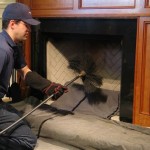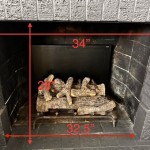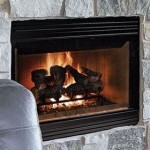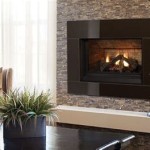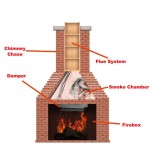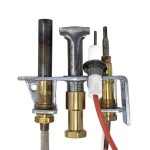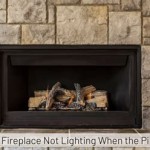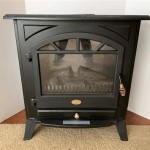White Wood Fireplace Mantel Designs: A Comprehensive Guide
The fireplace, a traditional focal point in many homes, provides warmth and a sense of comfort. The mantel, the structure surrounding the fireplace opening, is a crucial design element that contributes significantly to the overall aesthetic of the room. Among the various materials and colors available, white wood fireplace mantels present a timeless appeal, offering versatility and the ability to complement a wide range of interior design styles. This article delves into the diverse designs, materials, installation considerations, and stylistic integrations of white wood fireplace mantels.
Understanding the Appeal of White Wood Mantels
The selection of a white wood fireplace mantel stems from several inherent advantages. White, as a color, possesses the ability to reflect light, thereby brightening the surrounding space and creating a sense of openness. This is particularly beneficial in rooms with limited natural light. Furthermore, white acts as a neutral backdrop, allowing other design elements within the room, such as artwork, furniture, and accessories, to stand out. A white mantel can be seamlessly integrated into various architectural styles, ranging from traditional to contemporary, and can be easily customized to reflect personal preferences.
Beyond its aesthetic benefits, wood itself offers a certain warmth and natural texture that contrasts nicely with the often stark or cold appearance of stone or brick fireplaces. The combination of white paint or finish and wood grain provides visual interest and depth. This tactile quality contributes to the overall inviting atmosphere of the fireplace area.
Exploring Different White Wood Mantel Designs
The design options for white wood fireplace mantels are extensive, catering to a wide array of tastes and architectural preferences. The following are some prevalent designs:
Traditional Mantels: Characterized by ornate detailing such as intricate carvings, fluted pilasters, and dentil molding, traditional mantels evoke a sense of history and grandeur. These mantels often feature a substantial profile and are best suited for homes with classic or formal interiors. Wood species commonly used for traditional mantels include mahogany, cherry, and oak, finished in a bright white or off-white paint.
Contemporary Mantels: In contrast to the elaborate detailing of traditional mantels, contemporary designs prioritize clean lines, minimalist forms, and geometric shapes. These mantels often feature a sleek, unfussy appearance, with smooth surfaces and a focus on functionality. Common materials include MDF (Medium-Density Fiberboard) or engineered wood, finished in a glossy or matte white paint. This style is well-suited to modern, minimalist or Scandinavian-inspired interiors.
Rustic Mantels: Rustic mantels embrace the natural imperfections and textures of wood. They often feature rough-hewn beams, exposed knots, and distressed finishes. The white paint is typically applied in a way that allows the underlying wood grain to show through, creating a weathered or aged appearance. This style is ideal for homes with a farmhouse, cottage, or country aesthetic. Reclaimed wood is frequently used in the construction of rustic mantels, adding to their unique character.
Floating Mantels: A popular modern choice, floating mantels appear to be suspended from the wall without visible supports. This minimalist design creates a clean and uncluttered look. Floating mantels are typically constructed from solid wood or MDF, and are often paired with a minimalist fireplace surround. They are well-suited for contemporary or transitional interiors where a simple, understated design is desired.
Shelf Mantels: These mantels consist of a simple shelf attached to the wall above the fireplace opening. They offer a practical and versatile design that can be easily customized with different trims and moldings. Shelf mantels are a cost-effective option and can be adapted to various architectural styles. They are often used in smaller homes or apartments where space is limited.
Materials and Construction of White Wood Mantels
The materials used in the construction of a white wood fireplace mantel significantly impact its durability, appearance, and cost. Various wood species and engineered wood products are commonly employed, each possessing unique characteristics:
Solid Wood: Solid wood remains a popular choice for fireplace mantels, offering natural beauty and longevity. Hardwoods such as oak, maple, and walnut are known for their strength and resistance to wear and tear. Softwoods like pine and fir are more affordable but may be more susceptible to dents and scratches. When using solid wood, it is crucial to ensure that it is properly seasoned and dried to prevent warping or cracking.
MDF (Medium-Density Fiberboard): MDF is an engineered wood product made from wood fibers and resin. It is a cost-effective alternative to solid wood and provides a smooth, uniform surface that is ideal for painting. MDF is less prone to warping or cracking than solid wood, making it a suitable choice for mantels in areas with fluctuating humidity levels. However, MDF is not as strong as solid wood and may not be suitable for supporting heavy objects.
Engineered Wood with Veneer: This construction method involves using a core of engineered wood, such as plywood or particleboard, with a thin layer of real wood veneer applied to the surface. This approach combines the stability and affordability of engineered wood with the aesthetic appeal of solid wood. Veneered mantels offer a wide range of wood species and finishes and can be a good compromise between cost and quality.
Primed Wood: Regardless of the core material chosen, mantels are commonly sold 'primed'. This means that they have been coated with a layer of primer, preparing the surface for painting and ensuring better adhesion of the final coat. This can save the buyer time and effort, as they do not need to apply primer themselves.
The construction method also plays a vital role in the mantel's structural integrity and longevity. Joints should be securely fastened using screws, dowels, or other appropriate hardware. The mantel should be properly attached to the wall using suitable anchors and fasteners, ensuring that it can safely support any items placed on it.
Installation Considerations for White Wood Mantels
Proper installation is crucial for the safety and aesthetic appeal of a white wood fireplace mantel. Several factors must be considered during the installation process:
Building Codes and Regulations: It is essential to comply with local building codes and regulations regarding fireplace mantel installation. These codes may specify minimum clearances between the mantel and the fireplace opening, as well as requirements for fire-resistant materials. Consulting with a qualified building inspector or contractor is recommended to ensure compliance.
Clearance Requirements: Adequate clearance between the mantel and the fireplace opening is necessary to prevent the mantel from overheating and potentially catching fire. Generally, a minimum clearance of 6 inches is required for mantels made of combustible materials, such as wood. Consult the fireplace manufacturer's instructions for specific clearance requirements.
Wall Structure and Support: The wall structure must be capable of supporting the weight of the mantel and any items placed on it. If the wall is not structurally sound, it may be necessary to reinforce it with additional framing or supports. For heavier mantels, it is advisable to use wall anchors that are specifically designed for the type of wall material.
Tools and Materials: The installation process requires a variety of tools and materials, including a level, measuring tape, drill, screwdriver, wall anchors, screws, and shims. It is important to use the appropriate tools and materials for the specific type of mantel and wall construction.
Professional Installation: While it is possible to install a white wood fireplace mantel as a DIY project, it is often advisable to hire a professional installer, especially for complex or heavy mantels. A professional installer has the experience and expertise to ensure that the mantel is properly installed and safely secured.
Stylistic Integration of White Wood Mantels
The versatility of white wood fireplace mantels allows for seamless integration into various interior design styles. The following are some examples of how to style a white wood mantel to complement different aesthetics:
Farmhouse Style: A white wood mantel with a distressed finish and rustic details, such as exposed knots or weathered edges, complements the farmhouse aesthetic. Decorate the mantel with vintage finds, such as antique clocks, old books, and galvanized metal accents. Add natural elements, such as greenery, dried flowers, or woven baskets, to complete the look.
Coastal Style: A white wood mantel with a clean, simple design evokes a coastal vibe. Paint the mantel in a bright white or off-white hue and decorate it with seashells, starfish, and other nautical-themed accessories. Incorporate light blue, sand-colored, and driftwood elements to enhance the coastal atmosphere.
Modern Style: A white wood floating mantel or a mantel with clean lines and a minimalist design complements the modern aesthetic. Decorate the mantel with a few carefully chosen objects, such as geometric sculptures, abstract art, and sleek vases. Keep the color palette neutral and avoid clutter.
Traditional Style: A white wood mantel with ornate carvings and a substantial profile complements the traditional aesthetic. Decorate the mantel with classic accessories, such as porcelain figurines, antique candlesticks, and framed portraits. Incorporate rich colors, such as burgundy, gold, and emerald green, to enhance the formal atmosphere.
Transitional Style: Transitional style blends elements of both traditional and modern design. A white wood mantel with a balanced design, incorporating both clean lines and subtle detailing, complements this aesthetic. Decorate the mantel with a mix of classic and contemporary accessories, such as a modern sculpture paired with antique candlesticks. Use a neutral color palette with pops of color to create a cohesive and inviting space.

White 52 Inch X 39 Wood Fireplace Mantel Surround Kit With Shelf And Trim Essex From Mantels Direct Poplar Wooden Chimney Com

Modern Ember Lenwood Traditional Wood Fireplace Mantel Surround Kit White 56 Inch Opening Classic Design Tiered Frame Molding Com

53 Best Fireplace Mantel Designs To Ignite Your Creativity Living Room Decor White Mantels

Modern Ember Lenwood Traditional Wood Fireplace Mantel Surround Kit White 56 Inch Opening Classic Design Tiered Frame Molding Com

65 Jim White Fireplace Mantel

Wood N Finish Fireplace Mantel Kit White Wash

53 Best Fireplace Mantel Designs To Ignite Your Creativity Classic White Mantels

Ekena Millwork 6 In X 5 Ft Sandblasted Faux Wood Beam Fireplace Mantel White Washed Manusd06x06x60wh The Home Depot

White 52 Inch X 41 Wood Fireplace Mantel Surround Kit With Shelf And Trim Yosemite From Mantels Direct Poplar Wooden Chimney Com
:max_bytes(150000):strip_icc()/sandandsisal-bdc76ad938a44d28ae9e23ef6c9fa331.jpg?strip=all)
17 Diy Fireplace Mantel Plans
Related Posts

